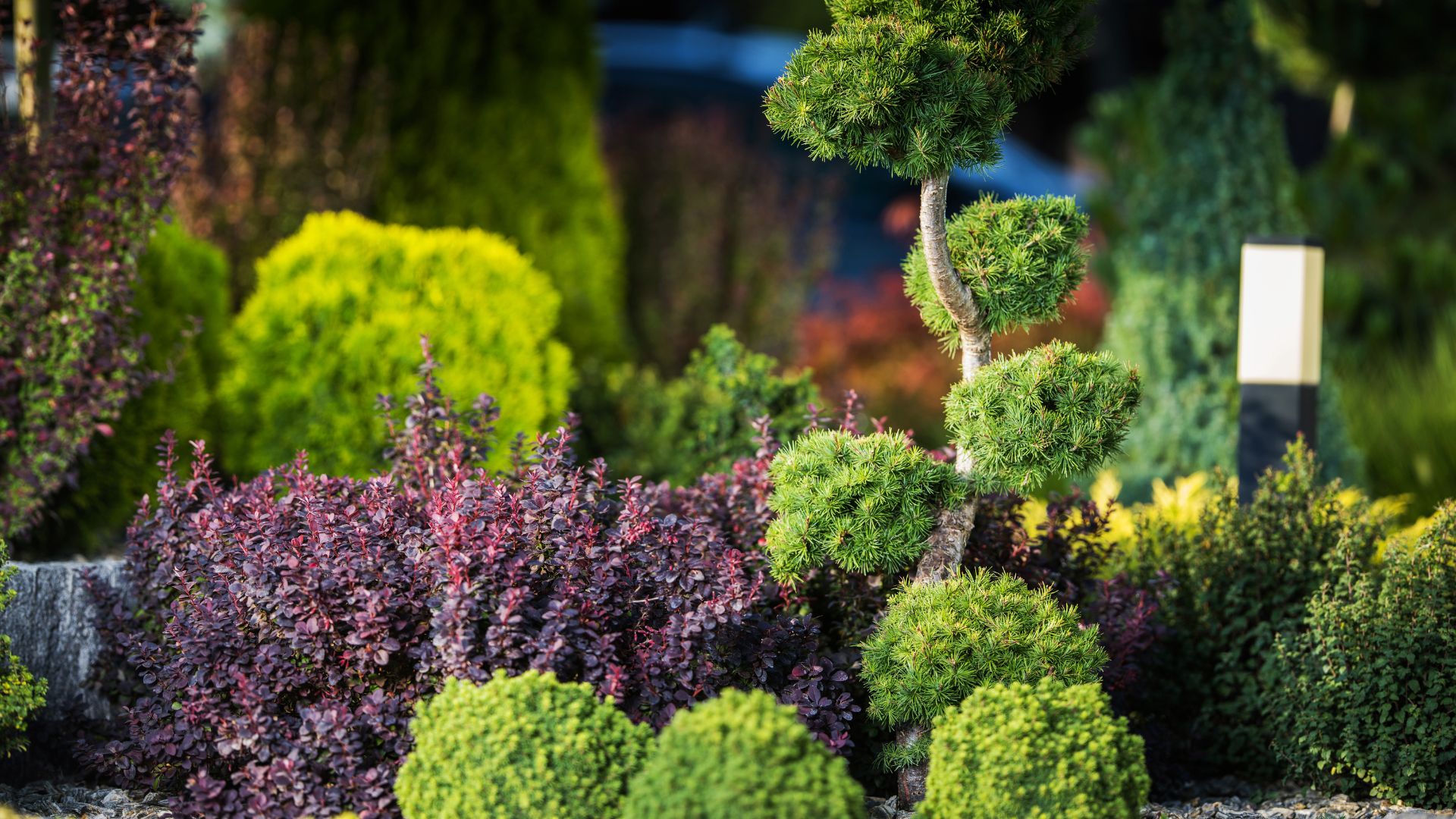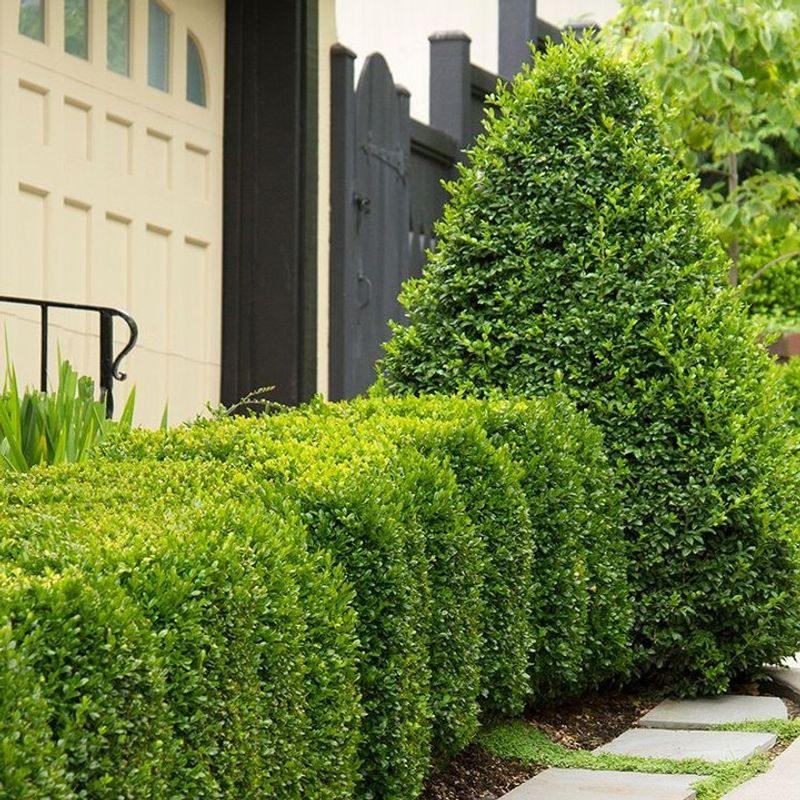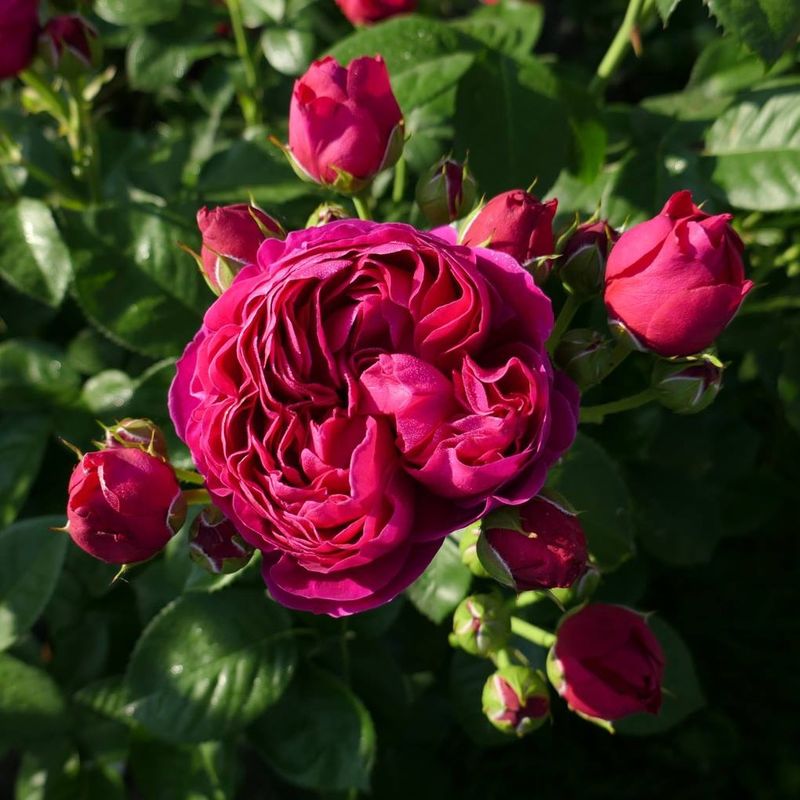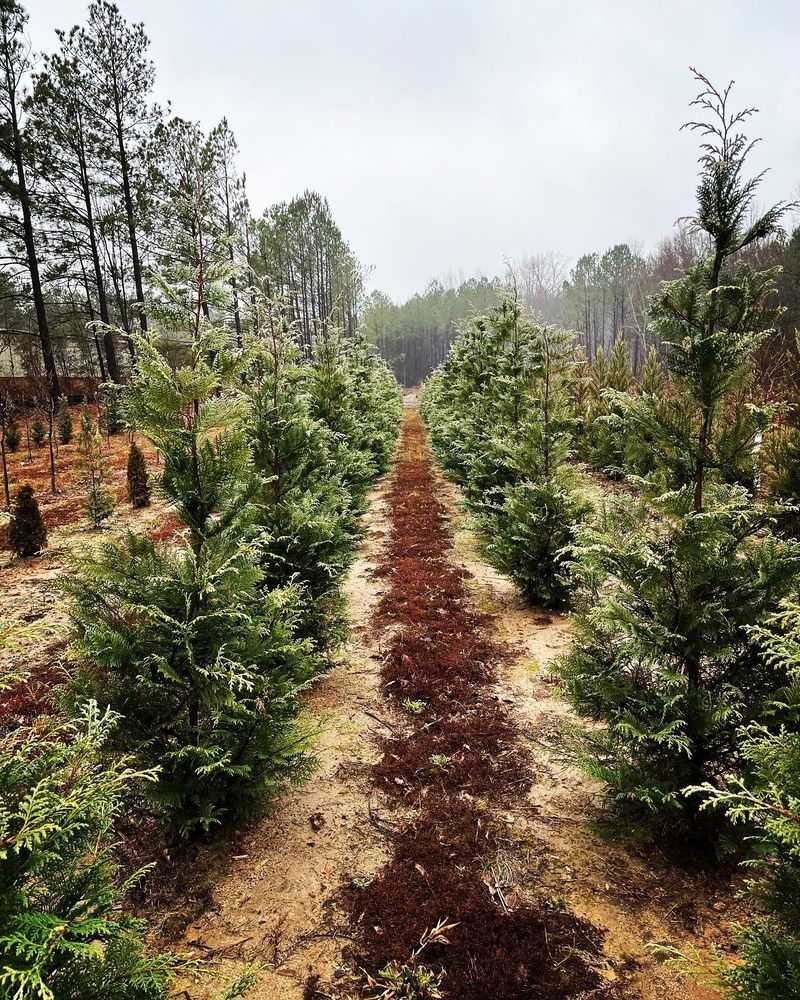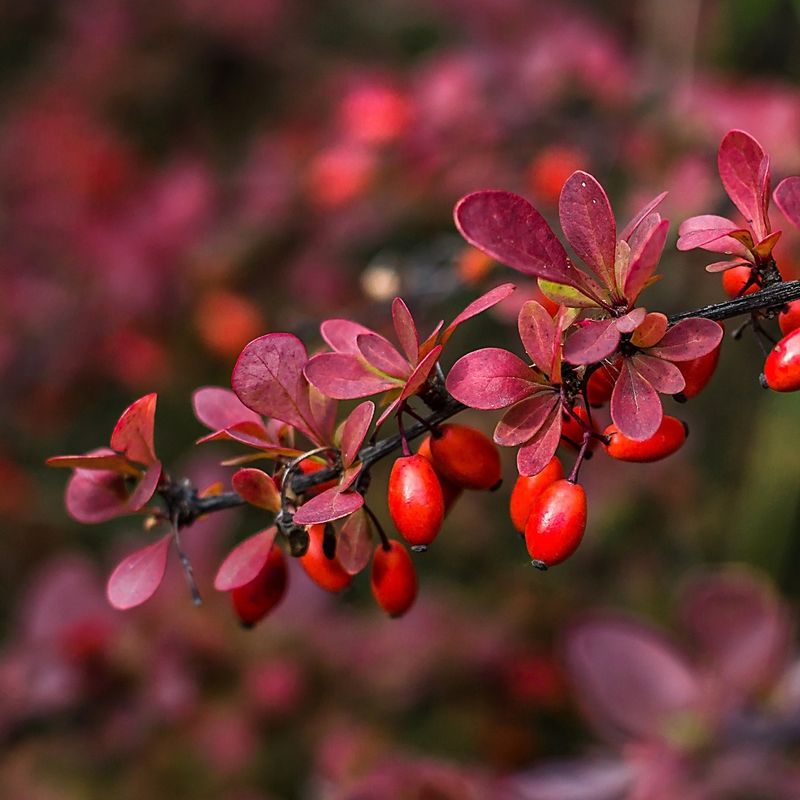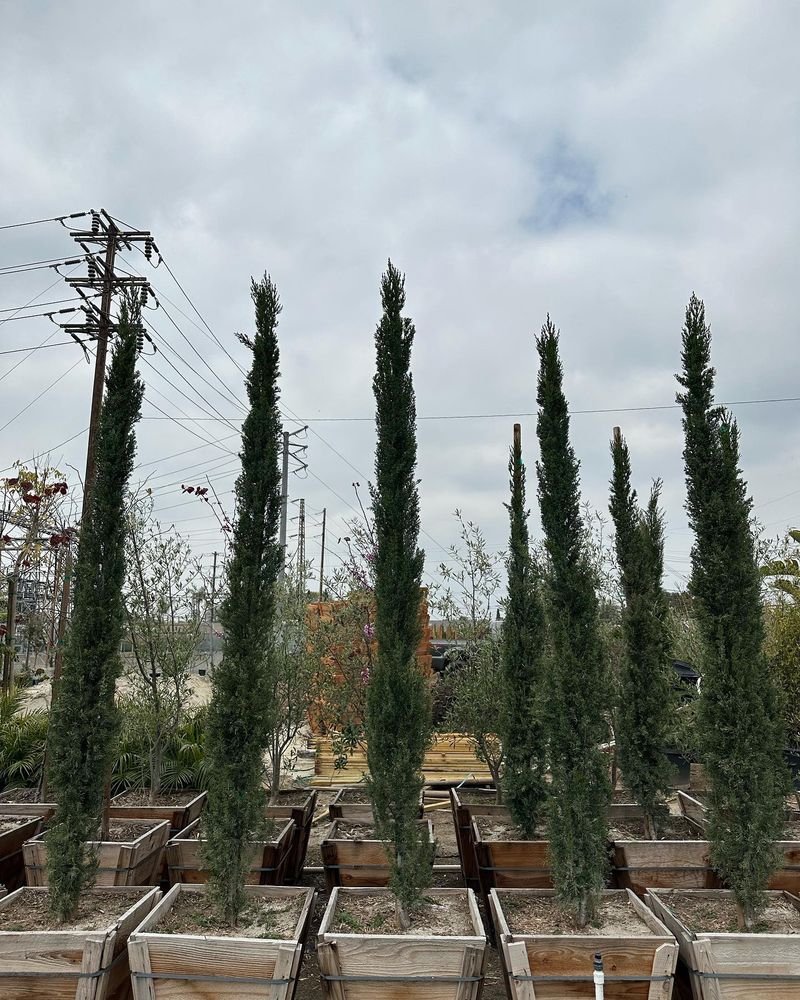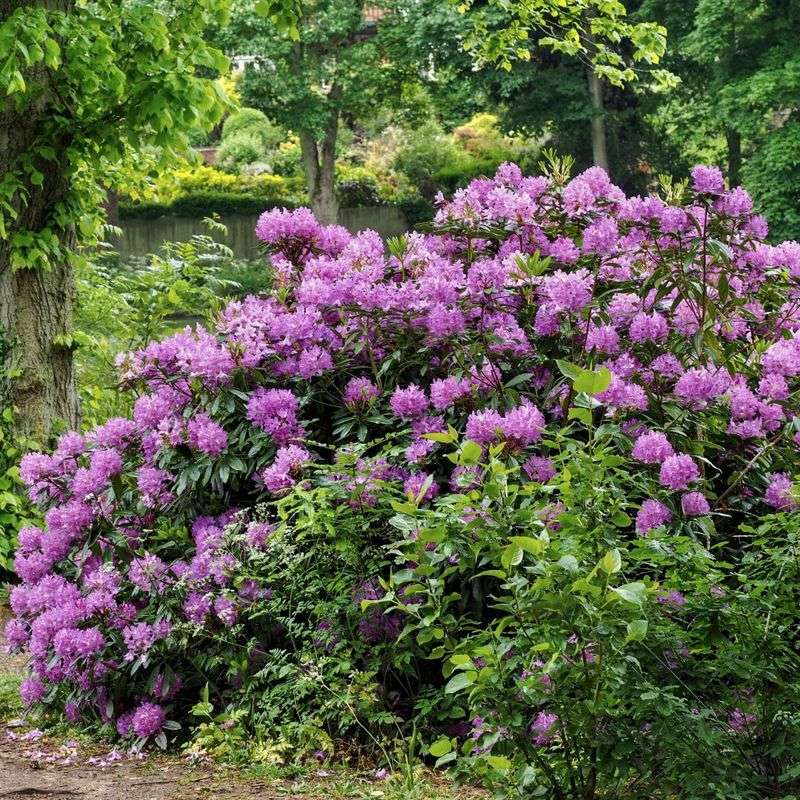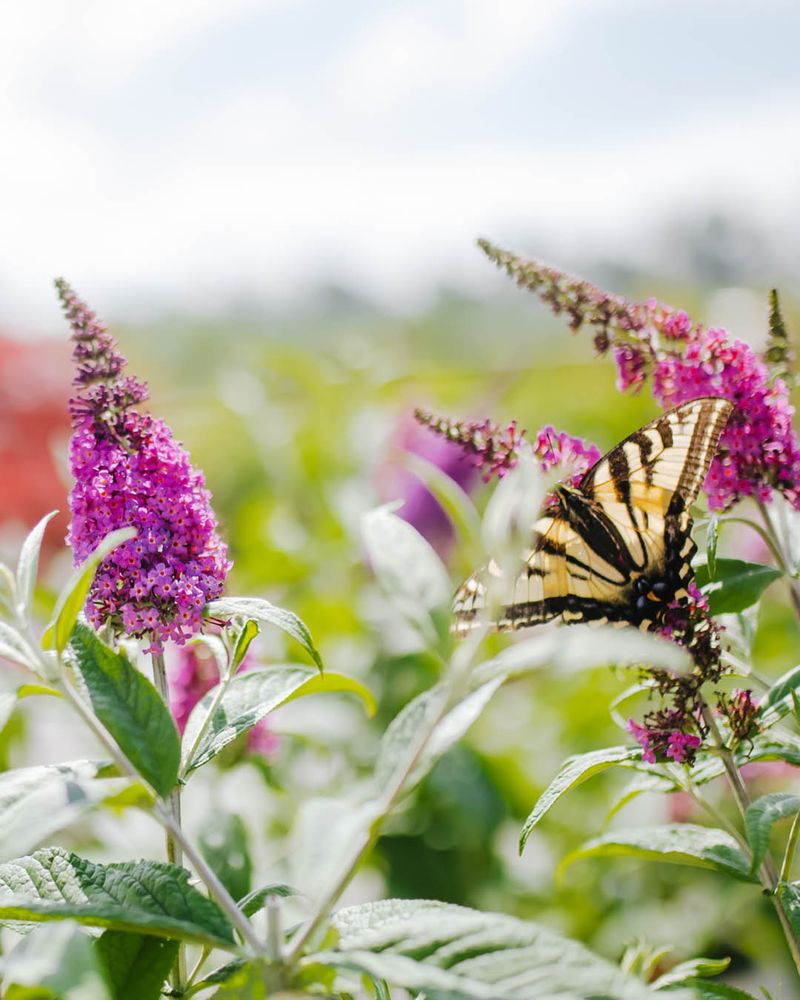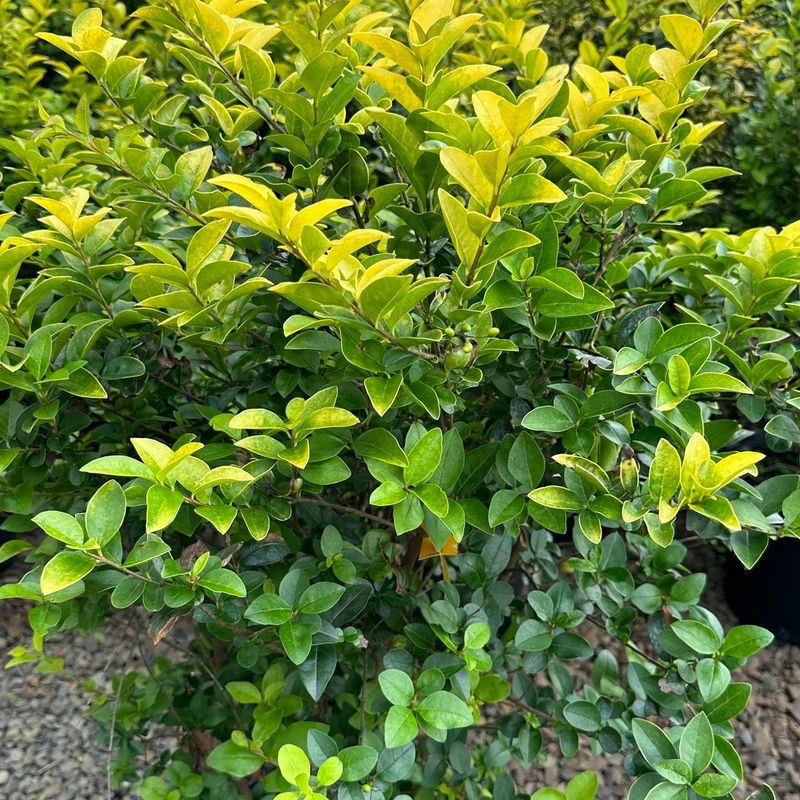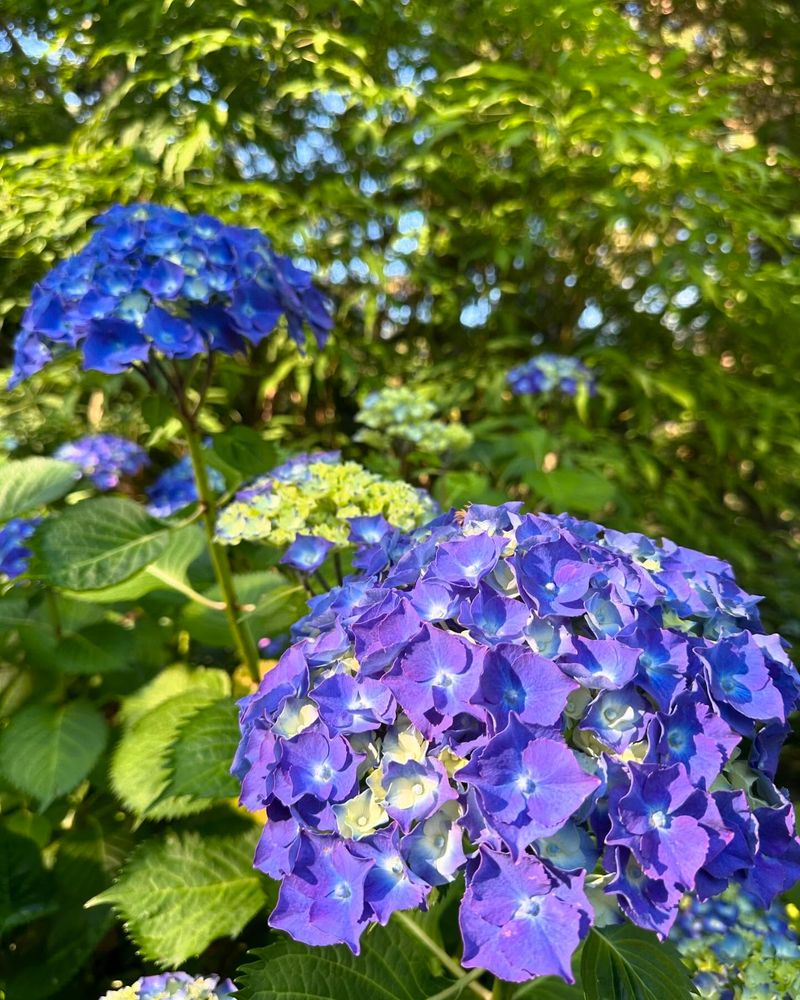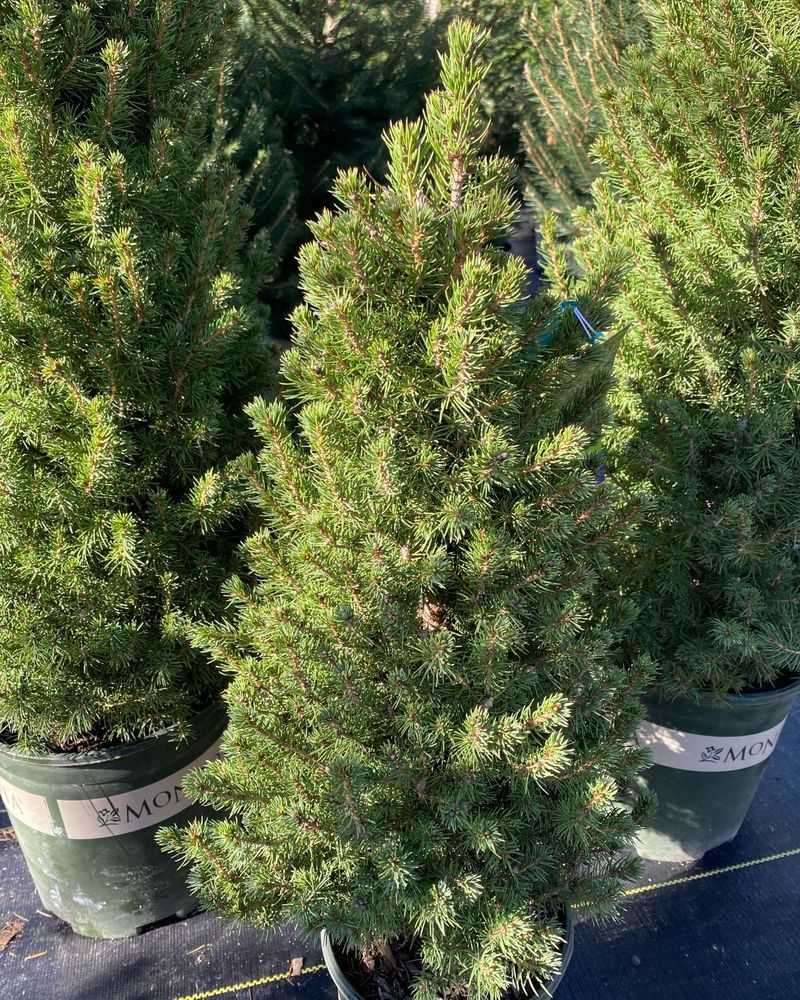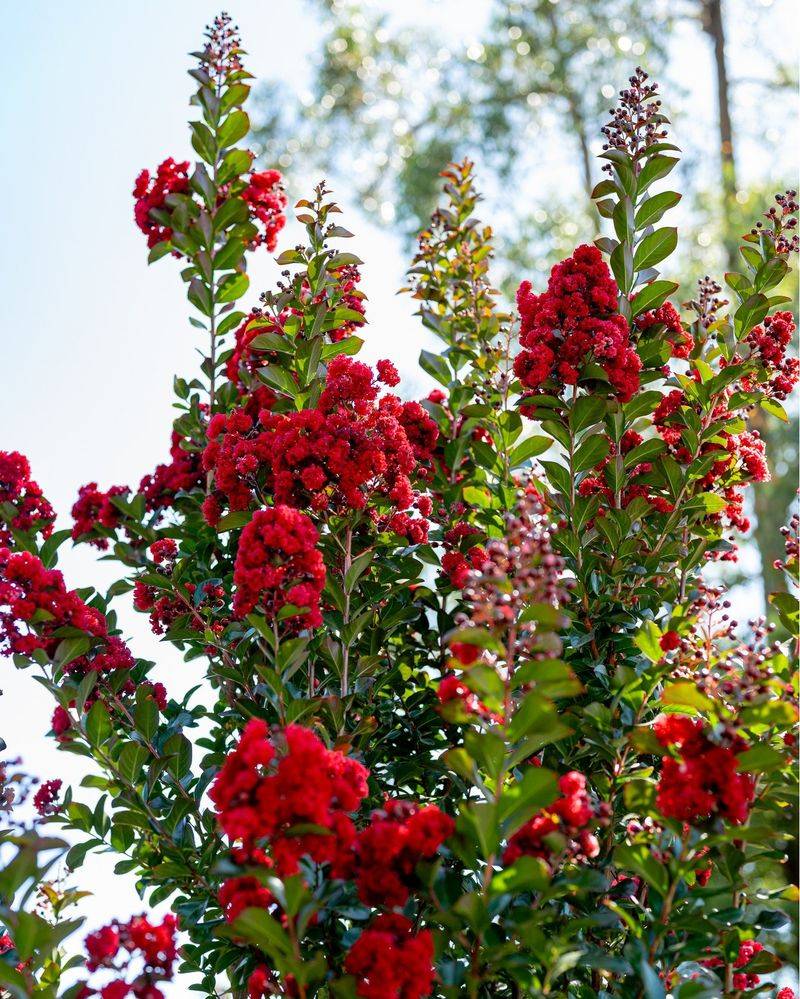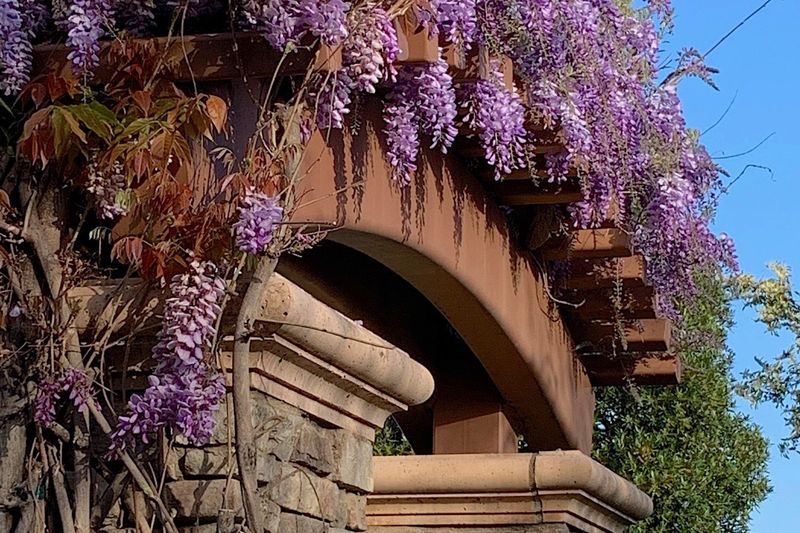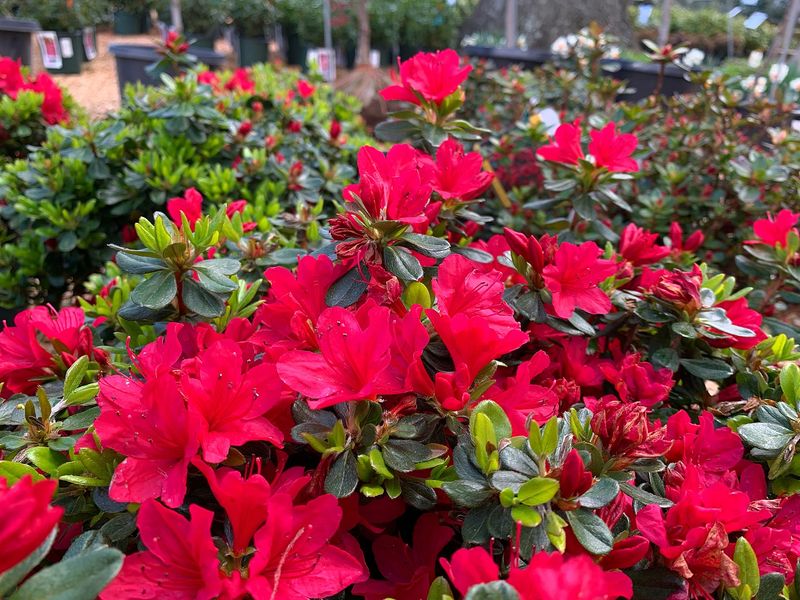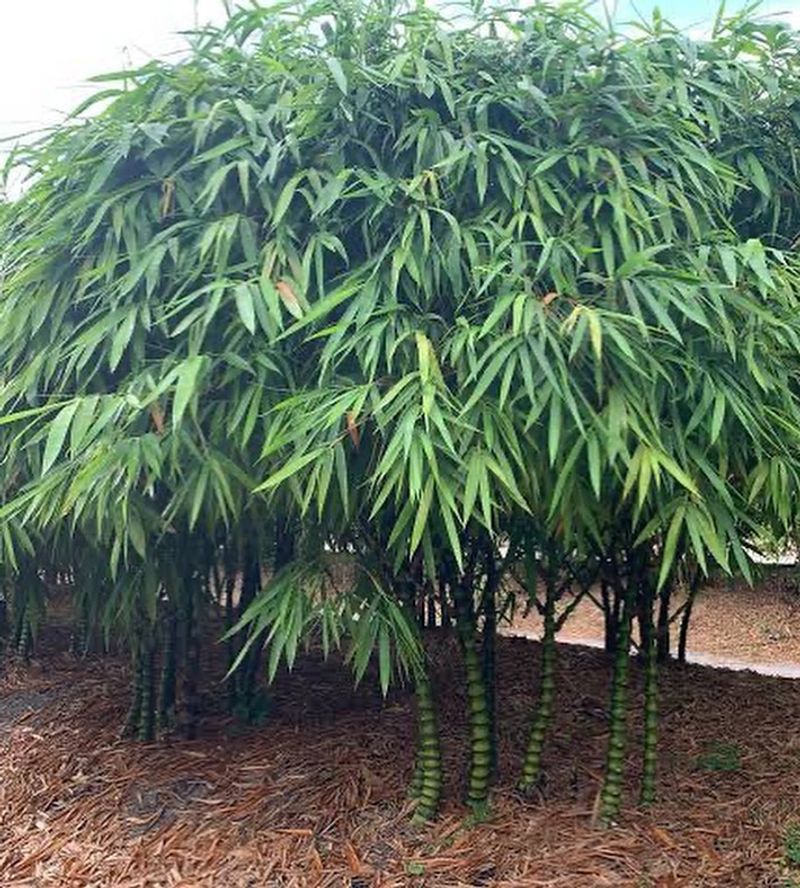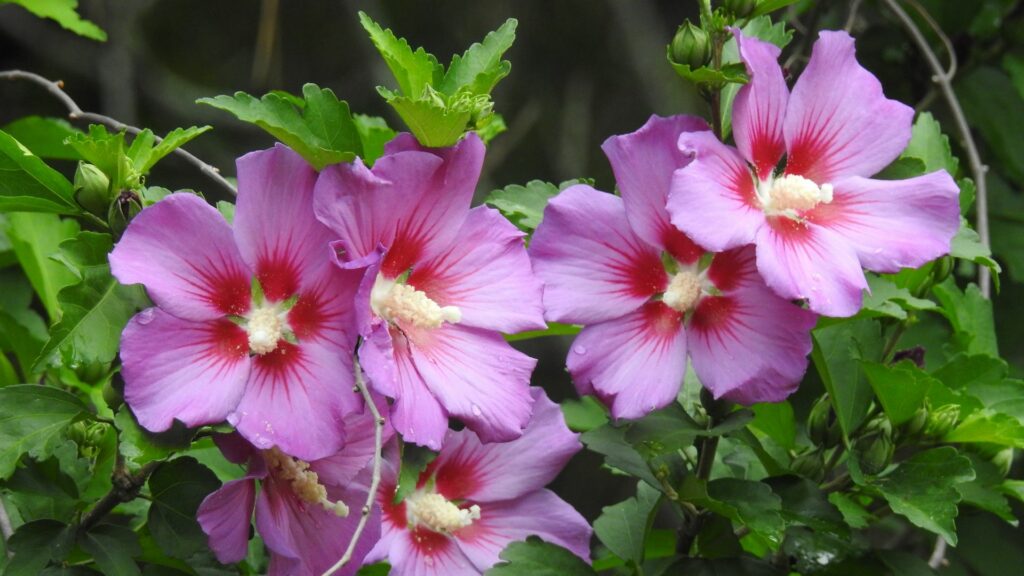Tired of shrubs that need constant babying just to look halfway decent? A landscape designer shared the 17 worst offenders that are more trouble than they’re worth.
From nonstop trimming to pest problems that never quit, these shrubs can turn your yard into a full-time job. If you’re aiming for a beautiful landscape without all the stress, you’ll want to avoid these picks.
Let’s take a look at the plants that might be quietly driving you nuts.
1. Boxwood
Nothing demands more consistent attention in formal gardens than these classic hedging plants. Boxwoods require precise, regular shaping to maintain their distinctive forms and prevent them from looking shaggy. The maintenance schedule feels never-ending.
These finicky shrubs are also magnets for boxwood blight, a devastating fungal disease that can quickly destroy your carefully maintained specimens. They’re particularly vulnerable to winter burn in colder regions, often requiring protective burlap wraps during harsh weather.
Boxwood leaf miners and psyllids frequently target these shrubs, requiring vigilant pest management throughout the growing season. The slow growth rate means recovery from damage or improper pruning can take years, testing even the most patient gardener’s resolve.
2. Hybrid Tea Roses
Garden perfectionism meets its match with these notoriously fussy bloomers. Hybrid tea roses demand constant vigilance against black spot, powdery mildew, and rust that can quickly defoliate your prized plants. The maintenance calendar stretches across all seasons.
Winter protection becomes another layer of work as these delicate beauties require mounding, mulching, and sometimes complete covering in colder climates. Their susceptibility to aphids, thrips, and Japanese beetles means you’ll need a comprehensive pest management strategy throughout the growing season.
Regular deadheading is essential to encourage continuous blooming, adding another weekly task to your garden chores. The specialized pruning techniques needed for optimal flowering can intimidate even experienced gardeners, making these roses particularly demanding companions.
3. Leyland Cypress
Speed comes with significant downsides when considering these popular screening trees. Leyland cypresses grow astonishingly fast, requiring frequent trimming to prevent them from quickly outgrowing their intended space. Their maintenance demands increase exponentially with age.
These towering giants frequently develop multiple leaders that split during storms, creating hazardous conditions and unsightly damage. Their dense growth pattern becomes a perfect environment for bagworms and spider mites, which can cause extensive browning and dieback if not promptly addressed.
Root systems struggle to support their massive height, making them prone to toppling in high winds or saturated soil conditions. The shallow roots also make them surprisingly vulnerable to drought stress, requiring supplemental watering during dry periods despite their established appearance.
4. Japanese Barberry
Deceptive marketing often portrays these shrubs as low-maintenance options for difficult spots. Japanese barberry certainly tolerates poor conditions, but its aggressive self-seeding creates constant weeding battles as seedlings emerge throughout your garden and beyond. The maintenance headaches extend far beyond the original planting.
Those famous thorns make pruning and maintenance particularly unpleasant, often resulting in painful scratches even through gardening gloves. Research has linked dense barberry plantings to increased tick populations, adding potential health concerns to their list of drawbacks.
Many states now classify this plant as invasive, with some banning sales entirely due to its ability to escape into natural areas. The ecological impact adds an ethical dimension to the maintenance burden, making this thorny shrub problematic on multiple levels.
5. Italian Cypress
Mediterranean dreams often inspire these dramatic vertical accents, but reality quickly sets in when grown outside ideal conditions. Italian cypresses develop brown patches and dieback when subjected to high humidity or excessive rainfall, creating an ongoing battle in many climate zones. The maintenance challenges intensify in regions with significant seasonal changes.
Spider mites frequently infest these shrubs, requiring regular monitoring and treatment to prevent unsightly damage. Their extreme height makes maintenance particularly challenging, often necessitating professional help or specialized equipment for proper care of mature specimens.
Heavy snow or ice can splay the branches, permanently ruining their columnar form and requiring replacement. Spacing becomes critical as these trees mature, with inadequate air circulation leading to fungal issues that can quickly spread throughout the entire planting.
6. Rhododendron
Spectacular spring displays come at a considerable price with these woodland beauties. Rhododendrons demand very specific soil conditions – acidic, well-draining, and rich in organic matter – that often require ongoing amendments to maintain. The maintenance commitment begins before you even bring the plant home.
These fussy shrubs show their displeasure through yellowing leaves when soil pH creeps above their preferred range, necessitating regular applications of acidifying amendments. Their shallow root systems make them particularly vulnerable to drought stress, requiring consistent moisture monitoring and mulching regimens.
Lace bugs and borers frequently target rhododendrons, creating unsightly damage that can persist for seasons. Deadheading the spent flower clusters improves appearance and prevents energy waste, but becomes increasingly time-consuming as plants mature and produce hundreds of blooms.
7. Butterfly Bush
Marketing hype often overshadows the significant maintenance requirements of these pollinator-attracting shrubs. Butterfly bushes grow with astonishing vigor, requiring aggressive annual pruning to prevent them from becoming woody, overgrown eyesores within just a few seasons. The maintenance commitment increases as the plants mature.
Their prolific self-seeding habit creates constant weeding battles as unwanted seedlings emerge throughout your garden and beyond. Many regions now classify butterfly bush as invasive due to its ability to escape cultivation and displace native vegetation that actually provides better wildlife habitat.
The promised butterfly attraction often disappoints as these plants provide nectar but not the larval food sources that truly support butterfly populations. Deadheading becomes a constant summer chore if you hope to control their spread while maintaining continuous blooms throughout the growing season.
8. Privet
Traditional hedge choices often lead to modern maintenance nightmares for unsuspecting homeowners. Privet grows with remarkable speed, requiring trimming as frequently as every two weeks during peak growing season to maintain a neat appearance. The maintenance schedule becomes relentless during summer months.
These vigorous shrubs produce thousands of berries that germinate readily, creating a constant battle with unwanted seedlings throughout your property and beyond. Allergies present another significant drawback, as privet’s abundant flowering produces prodigious amounts of pollen that triggers respiratory distress for many people.
Leaf spot diseases frequently affect privet in humid conditions, creating unsightly patches that can persist despite treatment. The dense growth pattern creates perfect habitat for spider mites and scale insects that require regular monitoring and intervention to control.
9. Hydrangea Macrophylla
Blue flower obsessions often lead gardeners into unexpected maintenance commitments with these popular shrubs. Hydrangea macrophyllas require ongoing soil amendments to maintain their prized blue coloration, with regular applications of aluminum sulfate necessary in all but the most naturally acidic soils. The color management becomes a perpetual project.
These temperamental beauties bloom on old wood, making proper pruning timing critical and recovery from mistimed cuts potentially taking years. Their large leaves lose significant water through transpiration, creating constant moisture demands during summer heat that can quickly lead to wilting and stress.
Winter protection becomes necessary in colder zones since flower buds form in fall and remain vulnerable to temperature fluctuations throughout winter. The specialized requirements for maintaining the coveted blue blooms create a chemistry project that continues season after season.
10. Alberta Spruce
Perfect conical forms hide surprisingly fussy maintenance requirements for unwary gardeners. Alberta spruces develop unsightly brown patches when their dense foliage traps moisture, creating ideal conditions for fungal diseases that can quickly spread. The damage often becomes permanent, leaving lasting scars on the plant’s appearance.
Spider mites absolutely love these dense conifers, requiring vigilant monitoring and treatment to prevent devastating infestations that turn the foliage rusty brown. Their extremely slow growth rate means recovery from damage or improper pruning can take many years, testing even the most patient gardener’s resolve.
Winter protection becomes necessary in exposed locations as these spruces are particularly vulnerable to desiccation from harsh winds and winter sun. The dense growth pattern requires regular inspection as pests and problems can develop deep within the foliage, remaining hidden until damage becomes extensive.
11. Crape Myrtle
Southern charm comes with surprising maintenance demands that many gardeners don’t anticipate. Crape myrtles suffer from numerous fungal issues including powdery mildew and leaf spot that can significantly diminish their ornamental value without regular treatment. The maintenance calendar stretches across multiple seasons.
These flowering trees produce abundant seed pods that create a constant cleanup battle and generate unwanted seedlings throughout the landscape. Aphids frequently target crape myrtles, secreting honeydew that leads to sooty mold on leaves and surrounding surfaces, creating additional cleaning challenges.
Proper pruning techniques become critical, as improper cutting leads to the disfiguring practice known as “crape murder” that ruins the plant’s natural form. The multiple trunks require regular attention to remove suckers and maintain the desired structure, adding to the ongoing maintenance burden.
12. Wisteria
Romantic garden dreams frequently turn into maintenance nightmares with these vigorous vines. Wisterias grow with astonishing speed and strength, requiring vigilant monitoring to prevent them from damaging structures, pulling down gutters, or strangling nearby trees. The maintenance vigilance never truly ends.
Training these rampant growers requires specialized knowledge of pruning techniques, with twice-yearly major cutting sessions needed to maintain flowering and control size. Years of patience may be needed before consistent blooming begins, with some plants taking up to seven years to produce their first significant flower display.
Root suckers emerge constantly, requiring regular removal to prevent the plant from spreading where it’s not wanted. The weight of mature vines necessitates extremely sturdy support structures, with inadequate supports quickly buckling under the considerable mass of established plants.
13. Azalea
Spring showcases hide year-round challenges for gardeners seduced by these flowering shrubs. Azaleas demand very specific soil conditions – acidic, well-draining, and rich in organic matter – that often require ongoing amendments to maintain. The maintenance commitment begins long before the first bloom appears.
These fussy plants develop yellowing leaves when soil pH creeps above their preferred range, necessitating regular applications of acidifying amendments. Their extremely shallow root systems make them particularly vulnerable to drought stress, requiring consistent moisture monitoring and specialized watering regimens.
Lace bugs frequently target azaleas, creating stippled, discolored foliage that significantly diminishes their ornamental value. Pruning timing becomes critical since improper cutting can remove next year’s flower buds, potentially eliminating an entire season of blooms with one mistimed trim.
14. Yew
Classic landscaping choices sometimes create modern maintenance headaches for homeowners. Yews grow with deceptive slowness, lulling gardeners into complacency before suddenly outgrowing their spaces and requiring significant pruning efforts. The maintenance challenges intensify as plants mature.
These traditional foundation plants contain highly toxic compounds in all parts, creating serious safety concerns in yards with children or pets. Their dense growth pattern becomes a perfect environment for spider mites and scale insects, requiring regular monitoring and treatment to maintain healthy appearance.
Recovery from overgrown conditions proves particularly challenging, as cutting into old wood may not produce new growth, leaving permanent bare patches. Winter damage from heavy snow or ice can splay branches and ruin the carefully maintained form, requiring extensive restoration pruning or complete replacement.
15. Bamboo
Exotic garden dreams quickly transform into invasive nightmares for unsuspecting homeowners. Bamboo, particularly running varieties, spreads aggressively through underground rhizomes that can travel astonishing distances and emerge in unwanted locations. The containment battle never truly ends.
Proper barriers require professional installation, extending at least 30 inches deep with specialized materials to prevent escape. Mature groves develop significant leaf litter that requires constant cleanup, especially around water features where the debris can clog pumps and filters.
Thinning becomes necessary as culms age and lose their ornamental value, creating an ongoing maintenance cycle of removal and cleanup. The extreme vigor means containment requires vigilance and immediate action when shoots appear beyond boundaries, with even brief neglect potentially creating problems that take years to resolve.
16. Burning Bush
This fall favorite often turns into a four-season frustration. While its brilliant red foliage might win hearts in autumn, the rest of the year reveals a bland, twiggy shrub that requires constant shaping to avoid looking scraggly. Without regular pruning, burning bush quickly becomes overgrown and leggy, especially in sunny locations.
Its maintenance demands go beyond aesthetics. Burning bush is now considered invasive in many regions, particularly in the eastern and midwestern U.S., where it escapes cultivation and disrupts native ecosystems.
Controlling suckers and unwanted seedlings becomes a never-ending task, and removing established plants often requires significant effort due to their dense root systems.
17. Rose Of Sharon
Tropical vibes meet tedious upkeep with this late-summer bloomer. Rose of Sharon may thrive on neglect in some conditions, but it rewards that neglect with rampant self-seeding. Gardeners often find themselves pulling up hundreds of unwanted seedlings each year as the plant spreads far beyond its original footprint.
Its vase-like shape requires regular pruning to prevent it from becoming top-heavy and unsightly. Aphids, Japanese beetles, and whiteflies frequently infest the blooms and foliage, adding pest control to your to-do list. Plus, the flowers’ sticky nectar can stain patios and attract wasps, turning what seems like a carefree shrub into a maintenance surprise.

